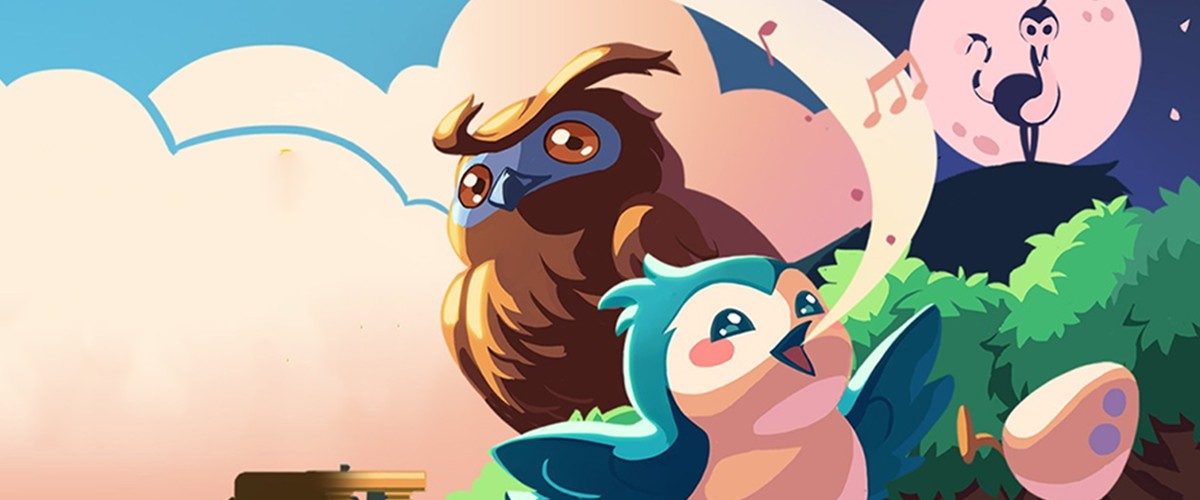- Shares
- 56
Rhythm games may not be everyone’s cup of tea, but there’s no denying their unique charm in creating memorable experiences with just music alone. Compared to the more common genres like shooters and role-playing games, they incite a different kind of thrill, where chaining successful combos to the pulsating beat becomes the player’s greatest sense of satisfaction. Joysteak Studios’ Songbird Symphony has a masterful execution of all that – and then some.

The debut venture from the Singapore-based team takes on a fairly straightforward, casual approach, from gameplay mechanics to the overarching narrative. In the world of singing birds, the player starts out as a small baby bird very aptly named Birb, who after being hatched from his egg and raised by a peacock, realises that he might not actually have the blood and DNA of the peacock community. The young fledgling then embarks on a quest to discover his true parentage, encountering obstacles and other feathered species along the way, while learning that everything is not how it seems.

It’s a simple premise, one that has been carried over from one well-known tale to another. In fact, Songbird Symphony bears the markings of the classic ugly duckling or black swan story, where the themes of acceptance, true belonging, self-identity, and loneliness run strongly. Feeling out of place in a supposedly homely environment? Check. Unable to fit in with any one community? Double check. Experiencing the crippling sense of self-doubt and isolation? Triple check.
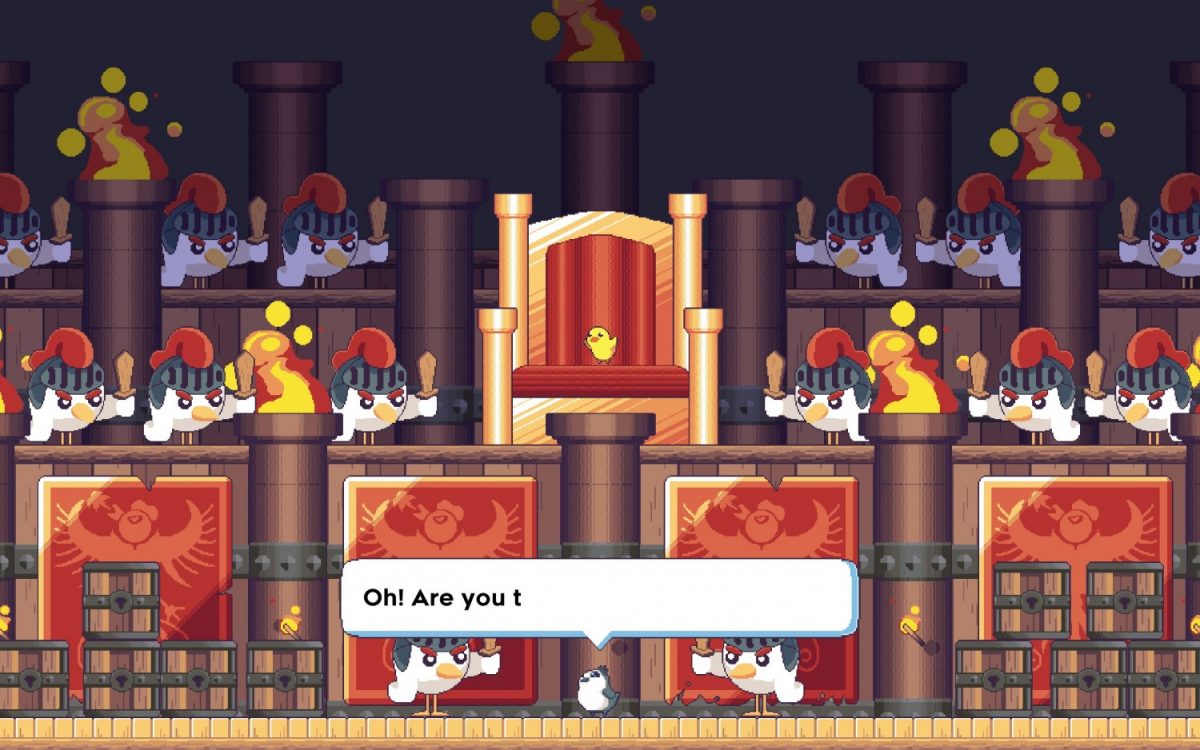
The game’s sleek nostalgia-inducing aesthetics, cheerful overtones, and vibrant design do an exceptional job at softening the solemn implications, however, and the inclusion of the adorable, perky Birb certainly helps its cause. It doesn’t take much to realise that the story isn’t particularly strong or compelling, especially since it features some of the more clichéd, predictable troupes, but it’s also incredibly endearing and full of heart. Songbird Symphony is, in essence, where Ralph Waldo Emerson’s words strike true – it’s not about the destination that matters; it’s about the journey.

To say that it’s a rhythm game is not entirely accurate either. While music is indeed an integral and intrinsic part of Birb’s world, the folks over at Joysteak Studios have changed up the formula to include platformer mechanics and puzzle stages as well. The lack of open-world elements means players are unable to explore the game levels extensively, although there’s some room set aside to do so, with split pathways leading to separate platforms that can be accessed by jumping, flying, or gliding. Progression to the next stage of the game is always a fixed route, however.

The puzzles, meanwhile, see players using rhythm mechanics to navigate past obstacles in their path, such as hitting the right notes in accordance to the rhythm of background soundtracks, pushing boxes around to place them on trigger pads, and the usual platformer shtick. These challenges are a far cry from the standards of Portal and Thomas Was Alone, which makes them fairly beginner-friendly and enjoyable, with just the minimally right amount of difficulty needed for that sense of gratification.
Having said that, there’s a slight gripe about some of the level designs – at times, seemingly separate puzzles are meant to link to one another, but that isn’t really conveyed to the player, and several trial-and-error attempts have to be made before the discovery sinks in. It can be a little confusing, although that could easily be deliberate on the team’s part.
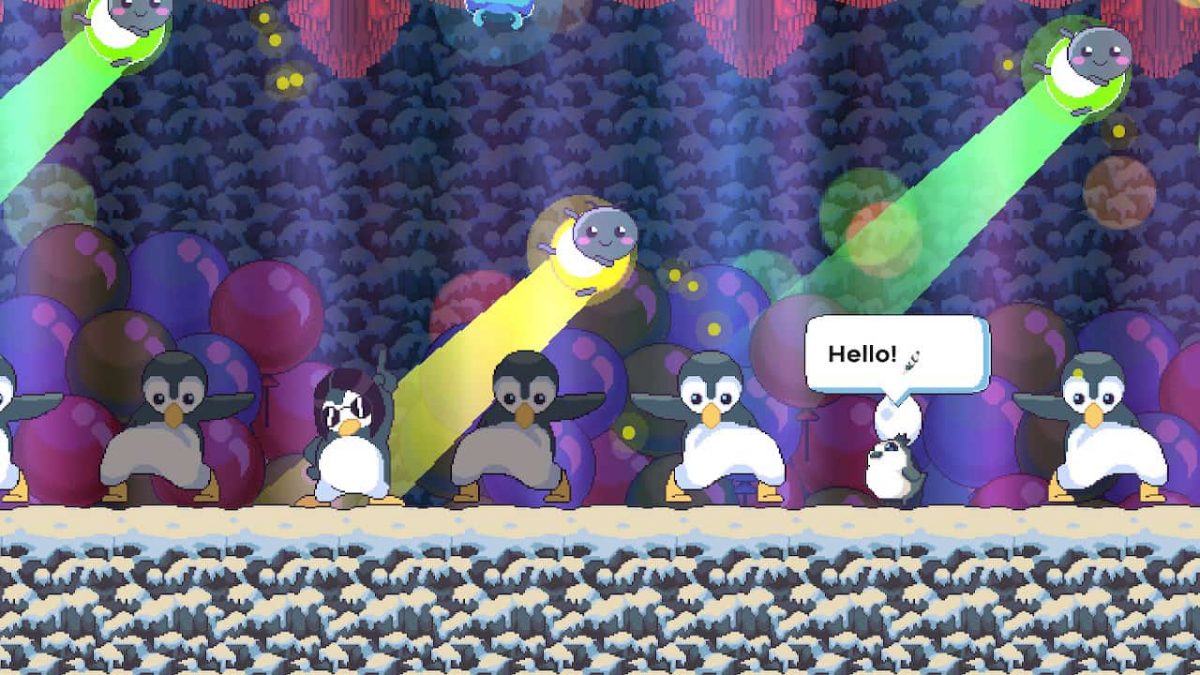
At specific parts of the game, the navigation can prove to be baffling, too. The zone overrun by penguins, for instance, features a maze of pipes and three separate puzzles that have to be completed for progression, but the lack of a mini-map or indicator makes it difficult to remember both the explored and untouched platforms. This can result in unnecessary backtracking, so it’s always good to maintain the habit of memorising your routes.
It’s not all about story progression, either. In every location, there are scattered feathers and musical notes that can be collected, as well as fun side activities to complete, and secret areas to be discovered. These extra features are a welcome addition, and bring to the table yet another layer of charm to this nice, little journey.

Unlike the majority of gaming titles on the market, Songbird Symphony features zero battles involving health bars, mana, item usage, and the like. Null, nada, zilch. Rather, both friendly and hostile encounters play out like PaRappa the Rapper sequences, in which the player must match button prompts on-screen by hitting the right keys to the rhythm of the songs to chain combos and score points.
It’s a mechanic that should be very familiar to fans of rhythm titles, and is designed easy enough for newcomers to pick up quickly – in the earlier stages, at least. The segments start out simple, and all one has to do is to hit only one single corresponding note correctly at a slow pace. As Birb continues his journey, the rhythm picks up, the keys increase in number, and the presentation style changes to fit into an assigned theme.
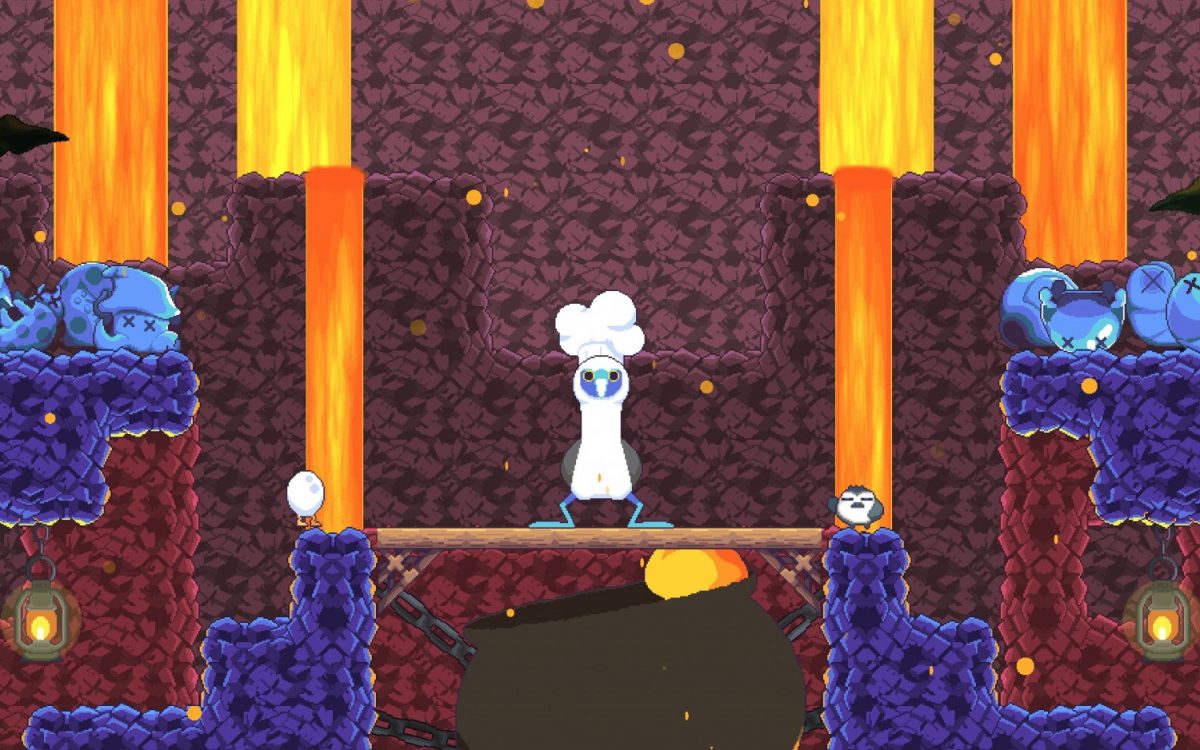
The last part, in particular, is praiseworthy. For one, it isn’t an easy feat to introduce different rhythmic styles for more gameplay variety; for another, adapting the established formula across varied environments certainly calls for a lot of original creativity. Here’s a case in point: a cooking-themed challenge has the traditional notes take the form of squids, as they get tossed up high, and land on the respective key prompts. It’s here that Joysteak Studios has truly demonstrated their creative prowess, which is indeed a sight to behold.
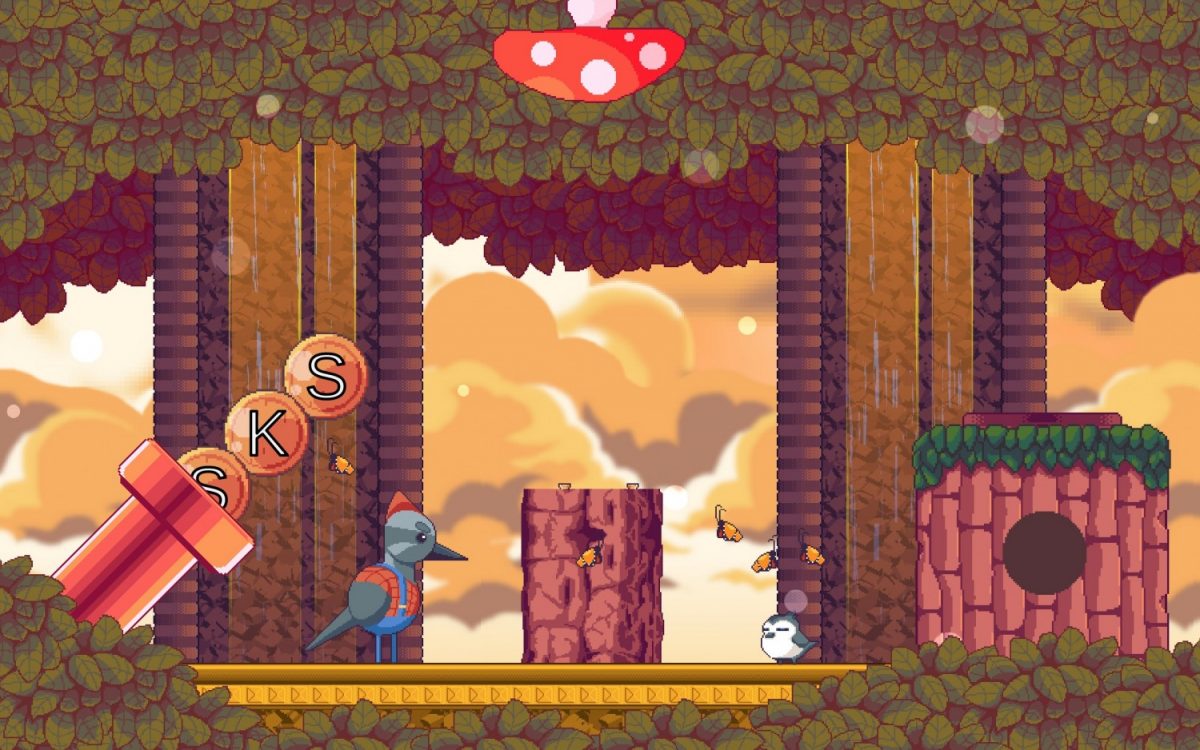
While these rhythmic sequences are the grand symphony that fuels Songbird Symphony, there are some minor flaws observed along the course of gameplay. As mentioned earlier, it’s very respectable that the team has planned out different mechanics, but the abrupt addition of a new note can throw players off-guard, and the spike in difficulty for selected levels may convert pleasant gameplay into a frustrating one. Just remember to groove to the beat (important for one particular playstyle where the notes will briefly disappear), observe the pattern, and ease back into the rhythm when the streak is broken.
Fortunately, the game is designed to be extremely beginner-friendly, so stage progression is an automatic affair, even if the lowest grade (a ‘C’) is awarded. Besides, the levels can always be revisited anytime – or at the end of the game –, which allows for a fair bit of replayability. Naturally, the boss face-offs pack a bit more of a punch, and will serve as a culmination of every rhythmic encounter unlocked thus far.
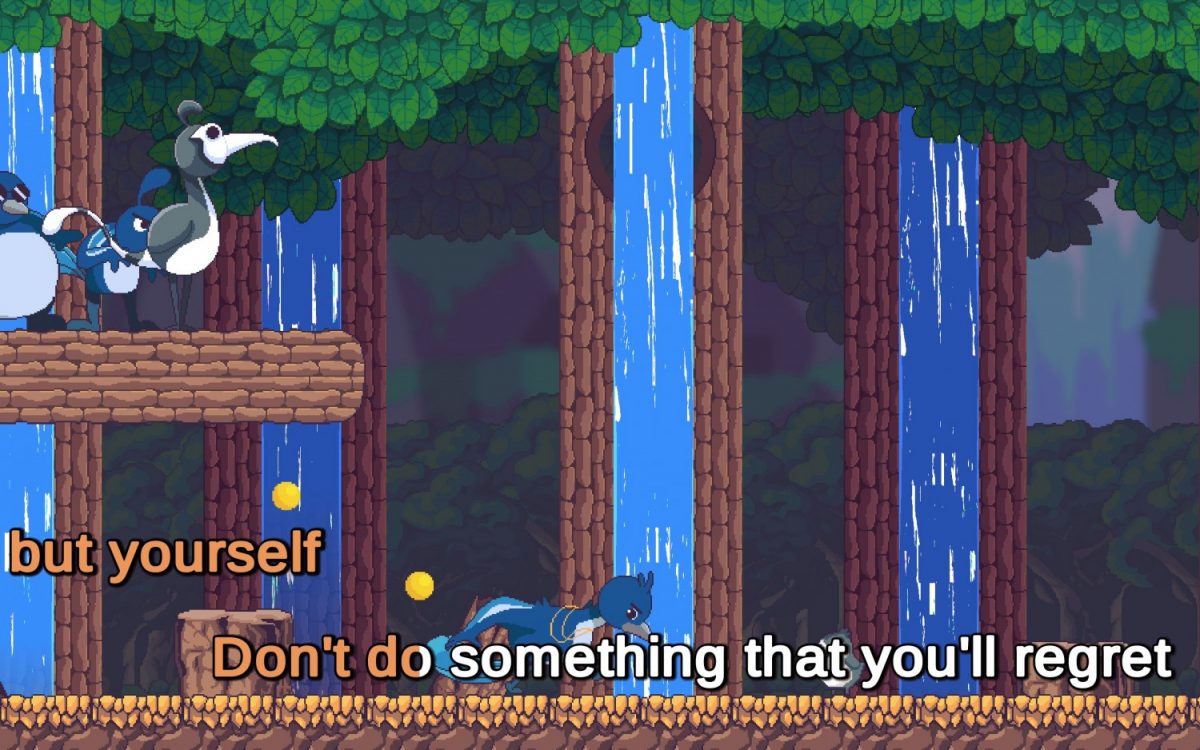
Of course, it’s not a rhythm-focused title without the soundtracks. Songbird Symphony boasts excellent music that makes it awfully easy to imagine the sing-along experience, despite the lack of actual vocals. It’s also been masterfully tailored to complement the mood of a particular scene – a showdown with the Magpies, for example, is accompanied by suspenseful, intense, and faster-paced tunes, while a friendly encounter with the Penguins sees cheerful, bright overtones. The on-screen lyrics can be awkward and corny sometimes, but it’s a flaw easily forgiven by the sheer delight delivered by the original soundtracks.

Visuals-wise, there’s hardly anything to dislike. The world of Songbird Symphony is a phenomenal spectacle, filled with lively, fine pixels that give a more detailed look to the characters and backdrops, and breathe life into the game. Each bird species is granted a distinct personality, from the vivacious Birb to the menacing Magpies, that make them stand out from one another, which then bleeds into their actions. Detail has been added to the adorable character sprites as well, with Birb busting out his dance moves once the player goes idle for a few seconds.

The only caveat to its kaleidoscopic design is during the rhythmic sequences, where everything suddenly kicks into overdrive, and the notes get lost amidst the swirl of colours. It’ll take a while to acclimatise to the distracting background, but players should be able to get back into the groove with minimal issues after that.
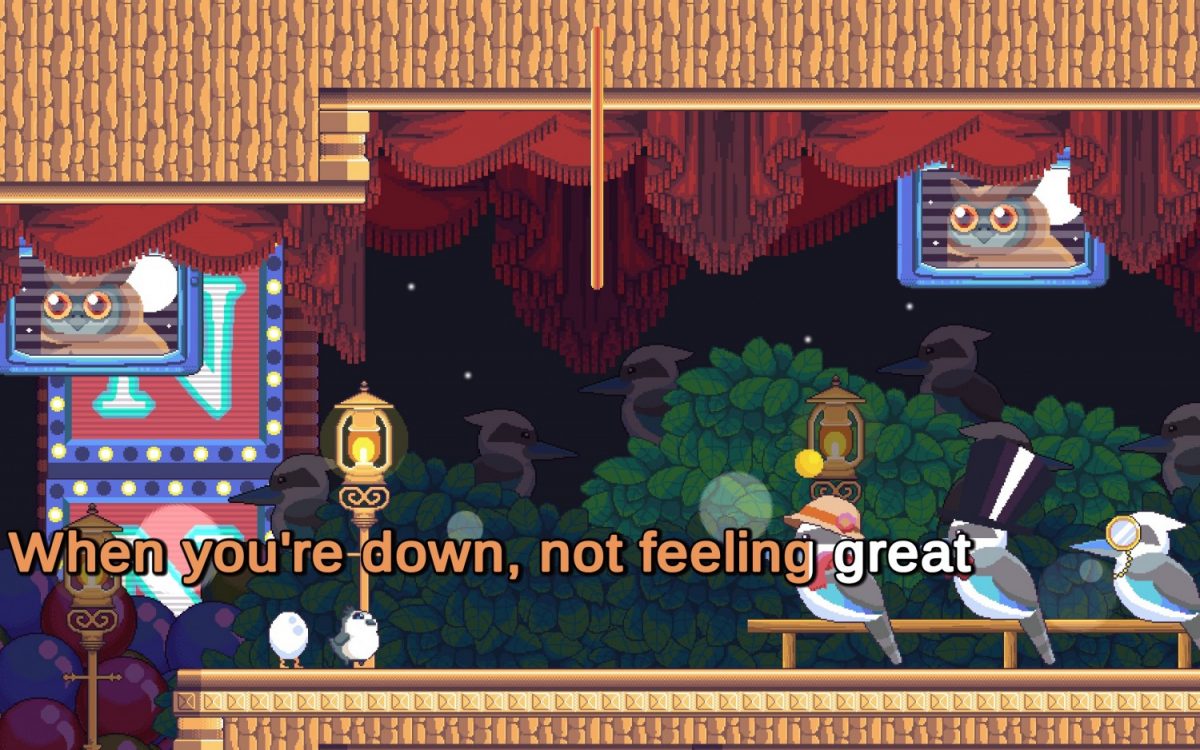
It has been an enjoyable five-hour journey with Songbird Symphony. Joysteak Studios has done a remarkable job with their debut showing, taking a leap of faith into a relatively niche genre, and delivering more than what’s expected. Despite its flaws, the game has a lot to give, from its heartwarming narrative and well-balanced gameplay elements to its adorable, beautiful visuals. Ultimately, it’s a simple passion story with a lot of heart and emotion, and in the world of Birb and his feathered friends, that’s all that truly matters.
Songbird Symphony is available now on Steam for PC and Mac, PS4, Xbox One, and the Nintendo Switch.
GEEK REVIEW SCORE
Summary
A solid first-time attempt from Joysteak Studios, Songbird Symphony is a lighthearted, well, symphony of spectacular aesthetics, an endearing narrative, and simple, fun gameplay.
Overall
8.3/10-
Gameplay - 8/10
8/10
-
Story - 7/10
7/10
-
Presentation - 9/10
9/10
-
Value - 9/10
9/10

